Hidden devices in the school setting

in the School Setting
Types of devices
• Vagus nerve stimulator • Baclofen pump • Implantable defibrillator • Vascular devices • Shunt • Transcutaneous electrical nerve stimulation • Electrical muscle stimulator • Diaphragmatic pacer
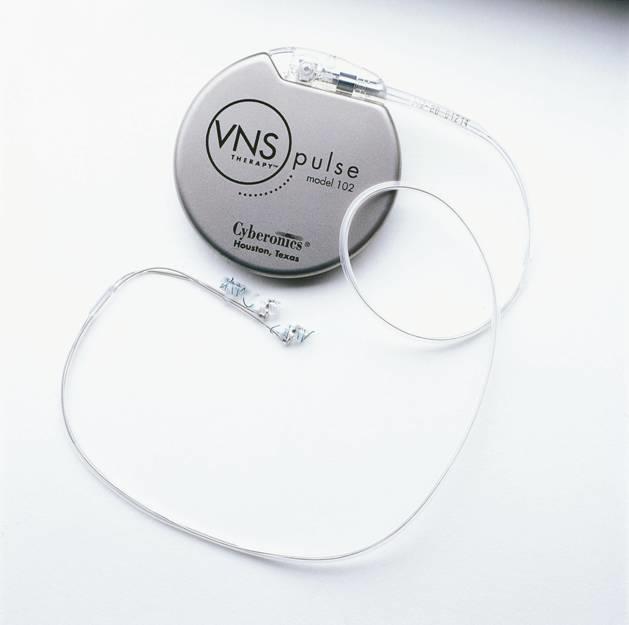
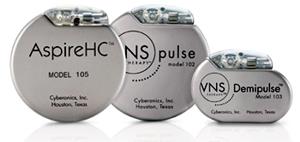
Vagus Nerve Stimulator
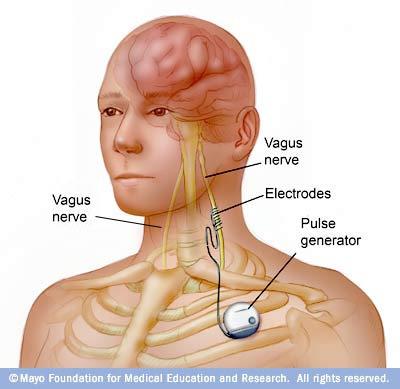
Vagus Nerve Stimulator
• This device is implanted under the left
chest. A second incision, made along the
left neck, is used to thread and wrap the
lead around the vagus nerve.
• Used for seizure disorders that can not be
controlled by medication or diet.
• Regular, mild electric pulses are sent from
a surgically implanted device to the brain
via the vagus nerve.
• This device is programmable by the
doctor. It can deliver a constant electrical
stimulation at low voltage and turn on
and shut off for programmed time
intervals. These time intervals are
adjustable and patient specific.
• Student also has own control with
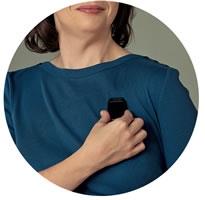
Vagus Nerve Stimulator- Magnet
• The patient also has their own
personal control over the VNS, allowing them to give extra stimulations regardless of the programmed on/off cycle.
• The patient can swipe the VNS
magnet over the implanted device to signal an added impulse. This process allows someone who feels an aura seizure starting, or a caregiver
that anticipated the start of a
Side Effects
seizure, to stop the seizure or
Magnet safety
decrease the seizure's length.
Swiping
• Swipe magnet from mid chest (usually left), going over
the implanted device and out towards the left armpit.
• Clothes do not need to be removed. Open coat if
heavy. Feel for implanted device.
• All you need is one swipe. But may be repeated based
• When the device was implanted? • Is it turned on? • What are the settings? • When was the last time the device was checked? • Any limitations or restrictions? • Where is the magnet?
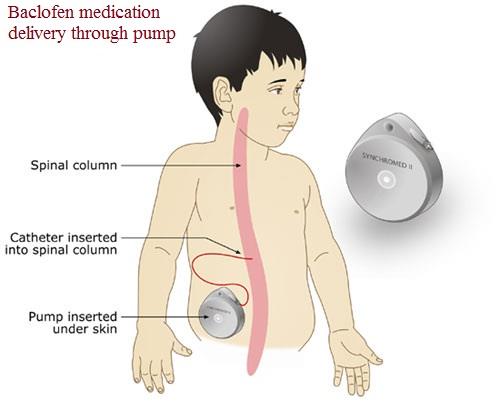
Baclofen: Used to relax muscles to relieve spasms, tightness and muscle
• A pump about the
size of a hockey puck is implanted into the abdomen.
• The intrathecal
baclofen is administered directly into the intrathecal space surrounding the spinal cord.
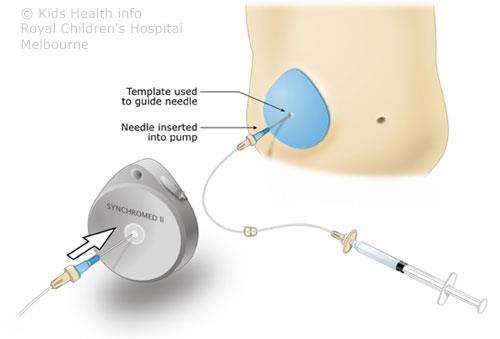

• When was it implanted? • When was the pump last filled? • Alarms • Overdose/Underdose • Physical restrictions • Changes in bowel & bladder habits
All of these concerns should be reported
to physician as well as family.
Implantable Cardioverter Defibrillator
Implantable Cardioverter
• Small device that's placed in the chest or
abdomen that is used to help treat
irregular heartbeats called arrhythmias.
• Congenital arrhythmias • Damage heart muscle
• Continuously monitors the heart for any
rapid and or irregular heart rhythms.
Implantable Cardioverter
• This device will deliver a charge of electricity to
change the heart rhythm.
• An ICD has wires with electrodes on the ends
that connect to your heart chambers. The ICD will monitor your heart rhythm. If the device detects an irregular rhythm in your ventricles, it will use low-energy electrical pulses to restore a normal rhythm
• Device battery usually lasts 4-7 years and is
checked at each appointment (either at office or through built-in device monitoring)
• "Medtronic Care Alert Monitoring" can be set
up to beep when battery low.
• Care Alert status checked with a magnet • Will beep for 10 seconds, then repeat
• Reason for the device? • When was it implanted? • Baseline heart rate parameters • Are there limitations or physical restrictions? • Emergency protocol for response • Safety issues like strong magnets, car engines, or strong stereo
• Access to the device manual
• Ex: Medtronic Patient Manual
• FAQ, device instructions, contact numbers, etc.
Vascular Devices
Vascular devices- Pumps
Vascular Devices
• Central Line (CL)
• Catheter inserted into large vein in neck or chest
that connects to the heart
• Chemo, TPN, long term infusion of medication
• Peripherally inserted central catheter • Catheter from vein in arm into the SVC of heart • Antibiotic therapy that is going to be longer than
• Implantable, hidden device • Accessed and de-accessed when needed • Chemo or other long term medications.
• Date of insertion? • Is the device accessed during school? • Medications? Pump? • Possible IHP/Emergency plan • What are the safety precautions? Activity restrictions? • Are supplies at school? • Resources
• Home care company working with student for medicine/line • Name of DME company • Troubleshooting guide for pump
• Used to drain extra cerebral spinal
fluid (CSF) that circulates around the brain and spine
• Shunts are named for the specific
• VP Shunt: Ventriculoperitoneal,
most common, placed in the lateral ventricle and drain to the abdomen
• Ventriculopleural shunt: Drainage
• VA Shunt: Ventriculoatrial shunt,
drainage into the heart
Signs/symptoms of shunt malfunction
Personality Changes Headache Nausea Changes in vision Slurred speech Worsening gait and balance Poor coordination Deterioration in school performance Decrease in sensory or motor function Swelling along the shunt tract Irritability Vomiting Seizures Lethargy
Shunt malfunction is an emergency, contact the MD.
• Why was the shunt placed and when? • What is the specific type of shunt? • When were recent revisions? • What are the signs/symptoms of increased ICP? • IHP/Emergency care plan as appropriate • Are there physical restrictions? • Other areas to consider:
• Bowel and bladder program • Orthotics
Transcutaneous Electrical Nerve Stimulation (TENS)
Transcutaneous Electrical Nerve Stimulation (TENS)
• Used for pain management • It uses electro frequency at about 80-90 mega Hertz • It can be delivered in cycles • Device attached to electrodes on the body
• Settings for device
• Time ON/OFF • Electric impulse
• Location on body • When to replace them
• How to hook up electrodes and turn on device • How to change battery in device
Electrical Muscle Stimulator (EMS)
Electrical Muscle Stimulator (EMS)
• This device is similar to the TENS unit, but it
delivers higher frequency of Mega Hertz.
• Used for spasms, edema relief, and to tone
weak muscles. What to know?
• Orders should reflect how much time
and mega Hertz the pump is to be set at
• Placement of electrodes (usually
recommend that the student comes with electrodes on)
• TENS: used to treat more nerve pain • EMS: used to treat muscle areas
Neurostimulation
Neurostimulation
• This is an implanted device that is used for people that have chronic
• It delivers mild electrical signals to the epidural space near your
spine through one or more thin wires, called leads.
• It disrupts the pain signals traveling between the spinal cord and
the brain to block the pain.
• When the device was implanted • Assessment of incision sites • ON/OFF settings • Model number. • Signs of seroma, CSF leakage • Activity restrictions. • Signs of device not working such as:
Diaphragmatic Pacer
Diaphragmatic Pacer
• Form of mechanical ventilation
that sends electrical signal from the brain to the diaphragm.
• Small electrodes are implanted
on the phrenic nerve that controls breathing
• External transmitter device
receives signal and communicates with electrodes in diaphragm to contract
• There is a dressing with the wires
that gets changed every three days.
• When was the device implanted? • How long is the patient on the device? • When was the dressing changed? • Safety issues, regarding beeping sounds etc. • Back up ventilator • Tracheostomy protocol and manual ventilation backup
Role of the Nurse for all Devices
• Assessment and appraisal of the student • Knowledge of equipment • Development of care plan/emergency plan as needed • Troubleshooting guide for equipment • Model number of devices • Extra equipment that might need to be stored at school • Healthcare provider release for communication • Contact information • Safety issues • Transportation concerns • Training of staff
HIDDEN DEVICES ARE FOREIGN OBJECTS TO THE BODY.
Remember to consider infection.
For more information
Visit the SHNIC website at:
Click on Information for School Nurses Factsheets, Medical device website resources
Source: https://www.kennedykrieger.org/sites/default/files/community-related-files/shnic-hidden-devices-in-the-school-setting.pdf
Middle-East Journal of Scientific Research 20 (8): 893-899, 2014 © IDOSI Publications, 2014 Studying the Factors Affecting Osteoporosis in Women with the Logistic Regression Analysis 1Bülent K l ç, Y 2 avuz Ta k ran, 3A. Serdar Yücel and M urat Korkmaz 1Orthopedist, Tekirda , Turkey 2Kocaeli University School of Physical Education and Sports, Kocaeli, Turkey
¡Que no te cambie la vida! Tome el control de su vida 1. Entender la migraña _3 2. El manejo de la migraña 9 3. El tratamiento de la migraña 12 ome el control de su vida: 4. El impacto de la migraña _16 entender la migraña 5. Su diario personal de migraña 18 Es muy probable que solamente aquellas personas que sufren migrañas








